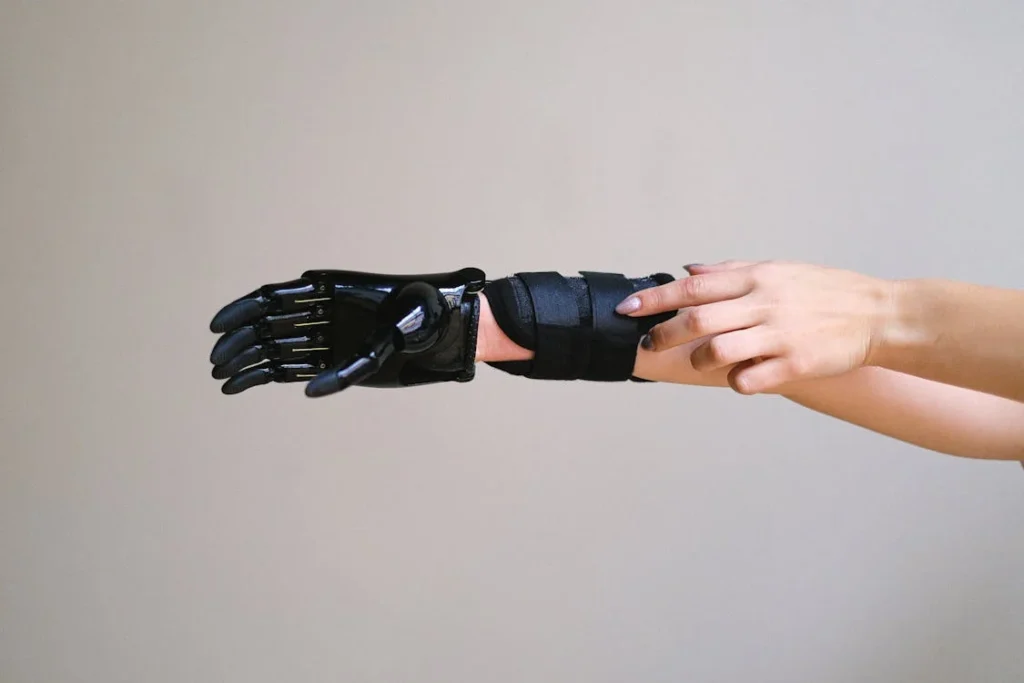Urban India is growing fast. Cities are full of energy, ambition, and movement. But for people with limb differences living in these spaces, recovery can feel like a race where everyone else is ten steps ahead. Even when prosthetic care is available, staying motivated during rehab, fitting it into busy lives, and getting the right emotional support is still a challenge.
At RoboBionics, we believe the answer lies in a powerful mix of play and progress—gamified rehabilitation. This new way of recovering is not just fun. It’s smart. It fits into modern life, speaks to today’s generation, and turns tough routines into something people actually want to do.
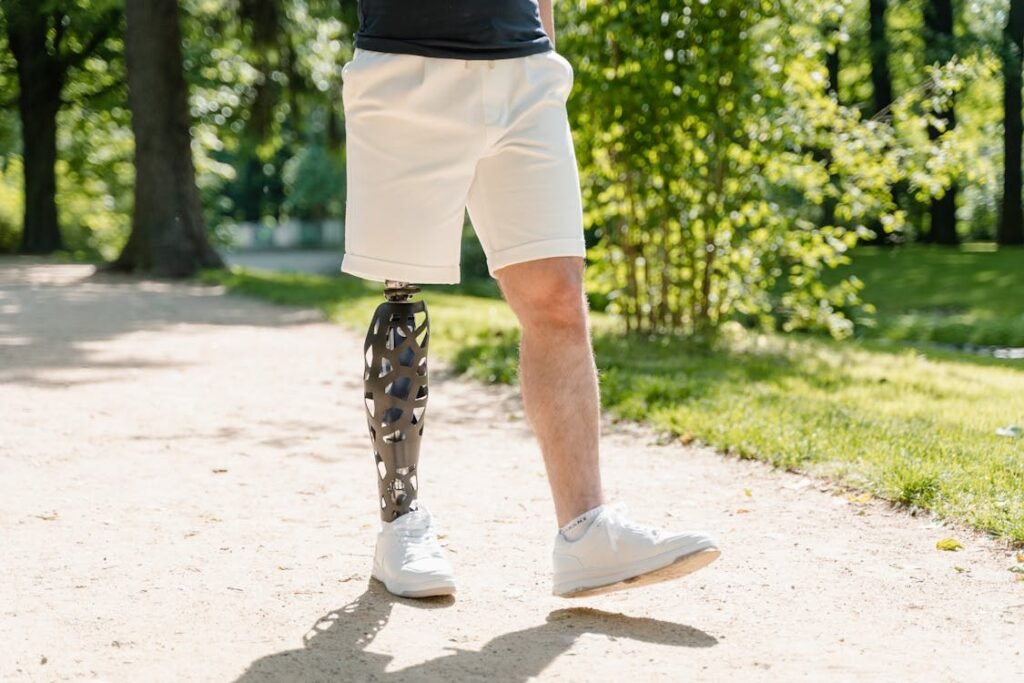
The Urban Reality: Why Traditional Rehab Falls Short
Living Fast, Healing Slow
Life in cities like Mumbai, Delhi, Bengaluru, or Pune moves quickly. People juggle long commutes, packed schedules, and endless distractions. There’s little time, and even less patience, for routines that feel slow or boring. Traditional rehab, with its repetitive tasks and clinical settings, often doesn’t fit into this kind of lifestyle.
For someone using a prosthetic for the first time, daily practice is essential. But finding time—and motivation—to stick with those routines can be hard. Urban life doesn’t slow down for recovery. It expects you to keep up. And when rehab doesn’t match that pace, people often drop out. Not because they don’t want to heal, but because the process doesn’t fit the world they live in.
That’s one reason why prosthetic care in India’s cities needs a change. A shift. Something that respects people’s time, attention, and mindset.
Gamified rehab does exactly that.
Attention is the New Currency
In today’s world, attention is everything. We scroll, swipe, skip. If something doesn’t engage us in seconds, we move on. That’s not just true for social media—it’s true for healthcare too.
When rehab is delivered through static exercises or long paper checklists, people lose interest. They may start strong but fall off quickly. It’s not that they lack discipline. It’s that the system doesn’t reward attention. It doesn’t respond in real time. It doesn’t make people feel like their effort matters.
Gamified rehab changes the game by giving immediate feedback. A small movement earns a point. A repeated effort unlocks a badge. A simple task becomes a challenge. Suddenly, the brain pays attention. The hand follows. Motivation returns.
And in urban India, where everything from payments to learning has gone digital, rehab needs to catch up. People are already using phones to manage health, food, transport, and work. Gamified rehab brings prosthetic recovery into that same space—making it relevant, accessible, and even enjoyable.
Fitting Recovery Into Everyday Life
Most city-dwellers don’t have the luxury of taking hours off for rehab appointments every day. Clinics are far. Traffic is a nightmare. And for many, missing work or school to train with a prosthetic just isn’t possible. This gap leaves people trying to recover on their own, without proper guidance or routine.
But what if rehab could happen in short, easy sessions—at home, during a break, or while waiting for a cab?
That’s what gamified platforms allow. Five minutes in the morning. Ten minutes at lunch. A quick challenge before bed. The recovery process doesn’t have to stop just because life is busy. It can weave into daily moments, becoming a habit that feels less like work and more like play.
For urban users of our Grippy™ Bionic Hand, this flexibility is life-changing. They’re not tied to a clinic. They don’t need to rely on others to guide every step. With our app, they can track their progress, compete with themselves, and stay engaged—anytime, anywhere.
Engaging the Next Generation of Users
India’s urban youth are digital natives. They’ve grown up with phones, games, and screens. They understand levels, scores, and achievements better than traditional therapy goals. For them, a boring rehab chart doesn’t inspire action. But a “Level Unlocked” message? That speaks to them.
Gamified rehab is especially powerful for teens and young adults adapting to prosthetic limbs. It makes training familiar. Friendly. Less intimidating. They don’t feel like patients—they feel like players. Like learners. Like doers.
This emotional shift is huge. It makes them more likely to show up. To keep going. To be proud of their progress.
In a city where everyone’s trying to prove something—to themselves, to society—confidence is everything. And confidence often starts with showing up for yourself, day after day. Even if it’s just for a few minutes.
Gamified rehab makes that easy to do.
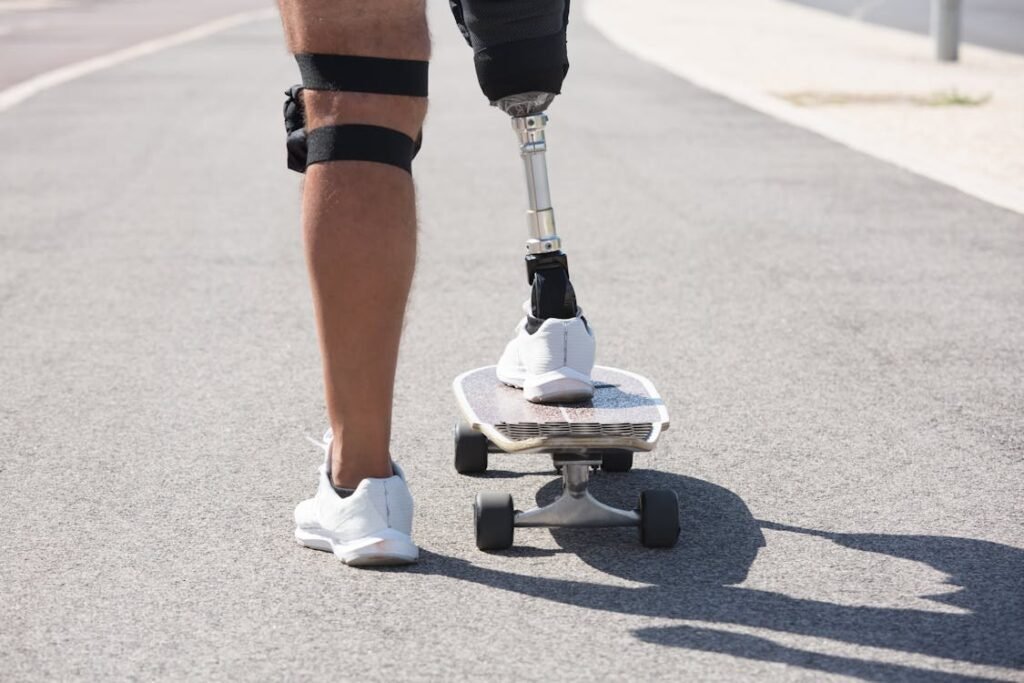
Making Recovery Interactive, Not Isolating
When Motivation Feels Like a Community
In big cities, people are often surrounded by others—but still feel alone. That’s especially true for those recovering from limb loss. Despite the crowd, rehab can feel like a private, uphill battle. The effort, the slow progress, the fear of being watched or judged—all of it adds up. Many choose to practice behind closed doors or avoid rehab altogether.
But gamified recovery turns that isolation into interaction. It gives users a way to connect, not just with their own progress, but with others on the same journey. Whether it’s seeing another user unlock the same badge, sending a virtual high-five, or comparing scores in a friendly way, the feeling of “I’m not alone in this” begins to grow.
For urban users—where many live far from family or move to cities for work or education—this kind of virtual connection matters. It builds peer support in a way that feels natural and encouraging. And that sense of shared momentum? It helps people stay consistent, stay motivated, and most importantly, stay hopeful.
Recovery doesn’t feel so lonely when it becomes something people grow through—together.
Catering to India’s Multilingual, Multicultural Cities
Cities in India are incredibly diverse. People speak different languages, come from different regions, and carry different beliefs about healthcare and healing. Any rehab system that hopes to work in this environment must respect and reflect that diversity.
Gamified rehab has the power to do just that.
Digital platforms make it easy to offer multi-language support, culturally relevant visuals, and personalized guidance. Whether a user speaks Hindi, Tamil, Marathi, or English, they can engage with the tool in a way that feels familiar. They don’t have to decode medical jargon or guess what to do next. It’s clear. Friendly. Designed for them.
At RoboBionics, we’ve seen how even a small shift—like showing instructions in a user’s mother tongue or including culturally resonant scenarios—can increase engagement tenfold. When the tool feels like it understands you, you’re more likely to trust it. To return to it. To grow with it.
And that kind of trust? That’s priceless in a place as dynamic as urban India.
A New Model for Urban Clinics and Prosthetic Centers
Most prosthetic centers and clinics in Indian cities are already dealing with heavy patient loads and limited staff. Traditional one-on-one therapy sessions, while valuable, often become hard to scale. Clinics can’t keep up with the growing need for consistent follow-up, detailed progress tracking, or long-term motivation support.
Gamified rehab offers a smart solution.
Instead of trying to stretch resources thin, clinics can use our digital rehab platform to supplement care. Patients can train independently between appointments, while therapists monitor their progress remotely. The app captures key data—like frequency of use, challenge completion, and skill development—that professionals can review and respond to.
This model makes rehab more scalable, more efficient, and far more responsive to real-life constraints.
Urban prosthetic centers that adopt this blended approach—combining expert guidance with gamified tools—are already seeing better results. Patients show up more prepared. They practice more consistently. They feel more engaged in their care.
That shift benefits everyone involved—clinics, caregivers, and most importantly, the users themselves.
Blending Technology and Humanity in a Meaningful Way
One concern many people have with digital tools is the fear of losing the human touch. In a country like India, where relationships still play a central role in healing, this is a valid concern. We don’t want people to feel like they’re talking to a screen instead of a person.
But gamified rehab, when done right, does the opposite. It deepens the human connection.
By giving users something to talk about—like a badge earned, a challenge completed, or a question about a level—it creates more opportunities for conversations. Between patient and therapist. Parent and child. Peer and peer.
It becomes a spark. A reason to check in. A way to say, “How did practice go today?” without making it feel like a lecture.
That’s what we aim for at RoboBionics—not just better technology, but better relationships. Tools that invite people into the process, rather than push them away. Systems that make recovery easier, but also warmer, more personal, more joyful.
Because in the end, healing isn’t just about strength. It’s about connection.
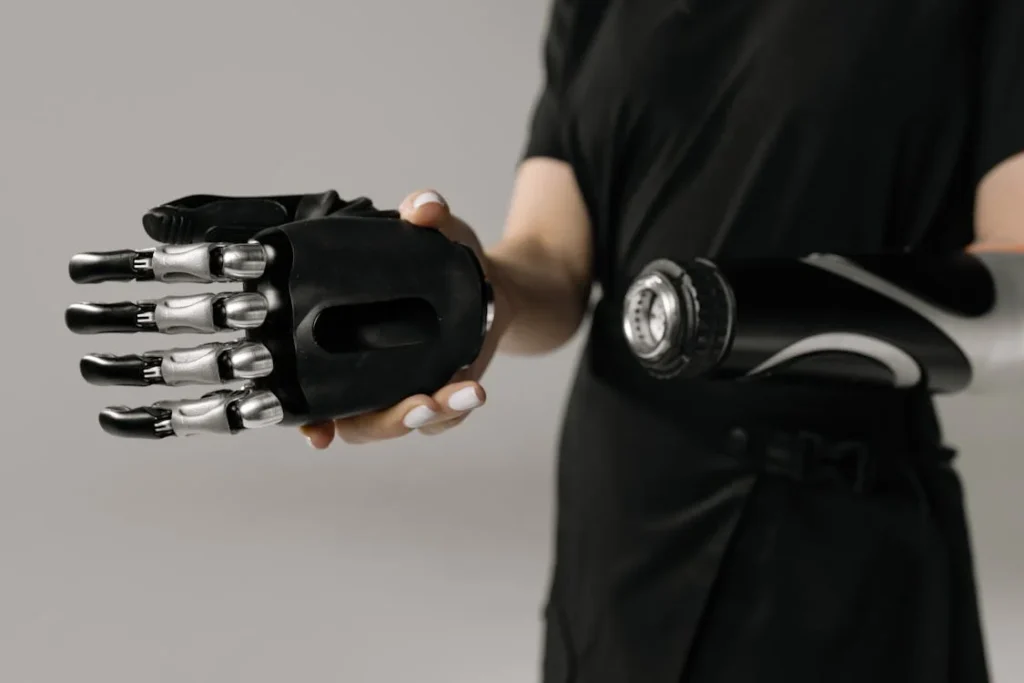
Creating a Culture of Consistency Without Pressure
Why Daily Practice Needs to Feel Rewarding, Not Rigid
One of the biggest challenges in prosthetic recovery—especially in urban settings—is consistency. Daily practice is critical for learning to control and use a prosthetic hand or finger effectively. But with busy city lives, constant noise, and endless distractions, sticking to a rehab schedule becomes a struggle.
Most people want to stay on track. But if every session feels like a chore, something to be ticked off the list, it quickly turns into something they avoid.
Gamified rehab transforms that. It replaces rigidity with rhythm. Instead of asking users to follow a boring schedule, it gives them small goals to achieve. Today, unlock this badge. Tomorrow, beat your best score. The reward isn’t just external—it’s emotional. You feel accomplished. You see your effort paying off in real time.
Over time, this builds a habit. Not one driven by fear of failure, but by the joy of progress. In urban India, where people are already forming habits around fitness apps, step counters, or learning games, this approach fits right in. It’s not a disruption—it’s a natural extension of how they already live and learn.
Helping Users Measure Progress Their Own Way
One of the frustrations with traditional rehab is that progress often feels invisible. You’re doing the work, showing up, trying—but if the results aren’t immediately obvious, it’s easy to get discouraged. This is especially true in fast-paced urban environments where people expect quick results.
Gamified rehab changes that by making progress visible—even if it’s tiny. You see a star added. A level completed. A timer improved. These micro-wins keep you moving forward, because they show that every effort matters.
What’s even more important is that users get to define their own milestones. One person might want to master a strong grip. Another might just want to open a door or hold a pen. The app supports all of it—without judgment. It’s not about comparing users. It’s about helping each person grow at their own pace.
This flexibility respects the diversity of urban India, where no two users have the same lifestyle, same need, or same pace of learning. And when users feel seen and supported as individuals, their motivation deepens.
Empowering Families and Caregivers to Be Part of the Journey
In Indian cities, families play a key role in healthcare. Whether it’s parents, siblings, or spouses, caregivers are always part of the healing process. But too often, they feel unsure about how to help. They want to encourage their loved one—but don’t want to push too hard or say the wrong thing.
Gamified rehab gives them a way to participate without overstepping. They can cheer on small achievements. Ask about new badges. Even try some challenges themselves just for fun. This shared experience strengthens emotional bonds and makes the process less lonely for the user.
We’ve had parents in Mumbai who sit beside their teen while they train, not as coaches, but as companions. We’ve had working spouses in Bengaluru who follow progress through app notifications and send quick texts of support. These are simple actions, but they make a huge emotional impact.
By involving the whole family in a light, joyful way, gamified recovery turns rehab into a shared journey—one that’s easier to walk when you’re not walking alone.
How Gamified Rehab Builds Emotional Resilience
Physical strength is only part of recovery. Emotional resilience is just as important—especially in busy cities, where stress, noise, and pressure are part of daily life.
Learning to use a prosthetic is not just about movement. It’s about trust. It’s about self-belief. It’s about picking yourself up on days when nothing seems to work.
Gamified rehab helps build that resilience in quiet, consistent ways. When users try and fail, but get to try again immediately, they learn that setbacks aren’t the end. When they unlock a badge after a hard session, they feel that struggle wasn’t wasted. When they get a “Well done!” message on a tough day, it lifts them in ways they didn’t expect.
Over time, these small emotional moments add up. Users begin to bounce back quicker. They smile more during practice. They start seeing effort as something beautiful—not something burdensome.
This shift from frustration to joy is what makes gamified rehab more than just a tool. It becomes a companion. A coach. A quiet voice that says, “Keep going. You’ve got this.”
The Role of Self-Efficacy in Long-Term Success
In cities, where people constantly measure themselves against others—whether it’s colleagues, classmates, or strangers on the metro—feeling capable is everything. And that feeling doesn’t come from external praise. It comes from within.
Gamified rehab builds self-efficacy—the belief that “I can do this”—through repeated, meaningful success. Not success handed over, but earned. Bit by bit. Through effort. Through trial. Through persistence.
When someone finishes a challenge using their Grippy™ Bionic Hand, they’re not just moving their fingers—they’re rewriting their self-image. They stop seeing themselves as someone who needs help and start seeing themselves as someone in control.
And that feeling? It spills over into every part of urban life—work, study, travel, relationships. It turns users into advocates, creators, leaders. It gives them a voice.
That’s why we believe gamified rehab isn’t just a better method. It’s a movement. A way to help people not just recover, but rise.

From Rehab to the Workplace: Building Career Confidence Through Gamified Recovery
Why Returning to Work Feels Like a Second Climb
For many people with limb differences, especially in urban India, getting a prosthetic is just the beginning. The real challenge starts when they try to return to work. The pressure to perform, the fear of judgment, and the uncertainty around using a new limb in a high-paced office environment—it’s enough to make even the most motivated person hesitate.
Cities like Mumbai, Gurugram, and Hyderabad are full of competitive workplaces where speed and productivity are non-negotiable. Missing even a few weeks of work can feel like falling behind. And for those who rely on manual work, tools, or typing, the journey back to professional life can feel overwhelming.
Gamified rehab bridges this gap. It doesn’t just help users train their muscles—it helps them rebuild the confidence they need to step into their jobs feeling prepared and capable.
Practicing Work-Related Skills Without Pressure
Our gamified app isn’t just about fun. It’s designed to help users master real-world movements. Grip control. Object manipulation. Speed. Precision. These aren’t random exercises—they’re directly tied to the skills users will need at work.
Whether someone is returning to a desk job and needs to type efficiently, or going back to a retail role that involves handling products, they can use the app to simulate and strengthen those movements in a calm, private environment. No eyes watching. No fear of falling short. Just practice that feels productive and personal.
The app tracks progress quietly. It doesn’t just show what was done—it shows what was learned. Users can walk into a job interview, or back to their desk, with proof in their pocket that they’ve been training. That they’re ready. That they’ve got this.
Helping People Reclaim Professional Identity
Losing a limb can shake a person’s sense of identity—especially when their job was a big part of who they are. A mechanic might feel unsure about returning to the tools. A teacher might worry about writing on the board. A chef might wonder if they can keep up in the kitchen.
This loss of identity is real. And it often shows up as hesitation, self-doubt, or even withdrawal.
Gamified rehab helps reverse that. It gives users tangible goals, feedback, and evidence of growth. And that evidence becomes a powerful reminder: “I’m not less than I was. I’m adapting. I’m capable. I still have so much to give.”
We’ve worked with users who started their rehab journey unsure if they could ever return to work—and within months, they were teaching, fixing, cooking, and leading again. Not because someone handed them confidence, but because they earned it. One challenge, one level, one task at a time.
Reducing the Stigma Around Recovery at Work
In India’s urban offices, the idea of “taking time for rehab” is often misunderstood. Coworkers may be supportive—but they don’t always know what prosthetic users are going through. This can lead to unspoken stigma or unrealistic expectations.
Gamified rehab helps users communicate their journey better. It gives them a story to share. A way to explain, “Here’s what I’ve been working on,” not as a weakness, but as a strength.
It also helps employers see the employee as someone proactive, resilient, and growth-focused. That shift in perception matters. It creates a workplace culture that supports—not sidelines—people in recovery.
And as more professionals begin using tools like our Grippy™ Mech Hand with confidence and pride, it sets an example. It shows others that limb difference isn’t the end of a career. It’s just a new chapter.

Gamified Rehab and the Digital Health Revolution in Urban India
How Government Support is Opening New Doors
India is undergoing a digital health transformation. With initiatives like Ayushman Bharat Digital Mission (ABDM), the country is moving toward a connected, tech-enabled healthcare system where services are smarter, faster, and more accessible. In urban areas especially, people are already using apps for doctor consults, test reports, fitness tracking, and more.
Prosthetic care can—and should—be part of this wave.
Gamified rehab fits perfectly into India’s vision for digital-first healthcare. It’s mobile-friendly, data-driven, and built for people who are already navigating life through their smartphones. More importantly, it brings prosthetic support into the hands of users—not just into hospitals and rehab centers.
At RoboBionics, our gamified platforms are designed to complement India’s growing digital health ecosystem. The same way a diabetes patient tracks blood sugar with an app, a prosthetic user can now track grip strength, flexibility, and progress—all from home. It makes care personal, ongoing, and aligned with the way urban India is already evolving.
Reducing the Pressure on Urban Hospitals and Clinics
Healthcare infrastructure in Indian cities is often stretched thin. Even top hospitals face long wait times and staff shortages. For prosthetic users, this means fewer follow-ups, delayed feedback, and a lot of rehab falling on their own shoulders.
Gamified recovery can reduce that pressure.
By empowering users to continue therapy at home—with real-time feedback, reminders, and milestones—clinics can focus on what matters most: complex cases, emergencies, and advanced care. The everyday progress doesn’t have to stop—it just shifts to a self-managed format, supported by technology.
This hybrid approach (clinic plus app) is the future. It means less waiting, more doing. Less paperwork, more progress. It saves time, costs, and energy—not just for patients, but for the entire healthcare system.
Creating Data That Helps Everyone Get Smarter
One powerful benefit of gamified rehab is the data it creates. Every time a user completes a challenge, the system learns something. Which exercises help most? What times of day people are most consistent? Which types of tasks cause the most frustration?
This data is gold.
It helps therapists fine-tune their approach. It helps designers improve tools. It helps policymakers understand gaps in care. And most importantly, it helps users see their own growth in numbers—not just feelings.
As India pushes for more digital health records and smarter decision-making, this kind of real-world, user-driven data will be essential. It turns anecdotal stories into clear trends. And those trends help shape better, more inclusive policies for people with disabilities.
Gamified rehab doesn’t just help individuals heal. It helps the entire system evolve.
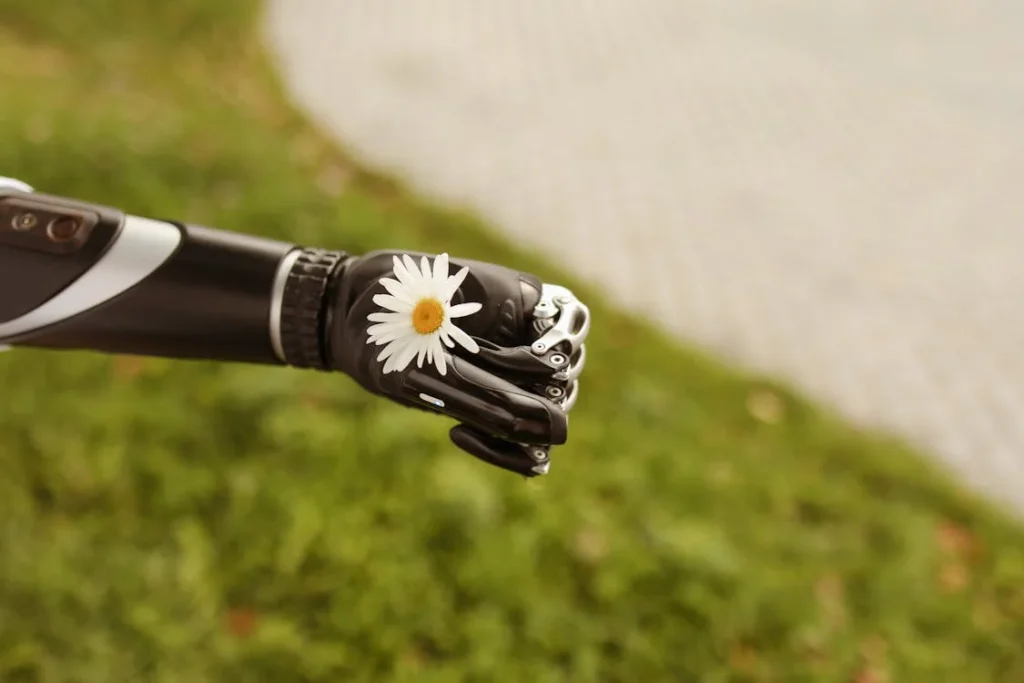
Bridging Innovation and Accessibility: Making Advanced Rehab Reach All
Why High-Tech Doesn’t Have to Mean High Cost
India’s cities are filled with innovation. From startup hubs in Bengaluru to healthcare giants in Delhi, new technologies are constantly being developed to solve big problems. But when it comes to prosthetic care, there’s a gap. Many private innovations are brilliant—but they’re too expensive or too complex to reach everyday people.
Gamified rehab, when done right, can change that.
At RoboBionics, we’ve built tools like our Grippy™ Bionic Hand and its gamified training system with a clear goal: make advanced care affordable and usable. Not just for a few—but for thousands across India’s cities.
Our gamified platforms run on everyday smartphones. They don’t need special equipment or costly upgrades. And because most urban users already have access to a mobile device and internet, rehab becomes something they can do on their own terms, without extra costs.
This approach helps level the playing field. It ensures that high-tech recovery isn’t reserved for the elite. It becomes something accessible, practical, and real—for students, workers, homemakers, and anyone else trying to regain movement and confidence.
Filling the Gaps Where Traditional Rehab Can’t Reach
Even in top-tier cities, there are gaps. Some neighborhoods don’t have a rehab center. Some families can’t afford regular therapy sessions. Some users are too self-conscious to attend in-person appointments. Gamified rehab steps into that space and says, “You can still recover.”
By offering structured guidance, friendly feedback, and tracked progress—all without needing a physical therapist every day—gamified platforms expand the reach of care. They fill the cracks where traditional systems fall short.
In this way, technology doesn’t replace therapists—it extends their impact.
We’ve had users from outer suburbs and underserved communities tell us how empowering it feels to take control of their rehab without traveling for hours or paying large fees. That sense of autonomy, fueled by access, is one of the biggest wins of all.
Scaling a Personalized Experience Across the City
One of the biggest hurdles in urban healthcare is scale. How do you give every person the attention and personalization they need when the population is so large?
Gamified rehab offers a surprising answer: personalization through data, not manpower.
Every user interacts with the platform in their own way. The system learns their habits. Adjusts difficulty. Sends reminders when they start dropping off. Offers encouragement at the right moment. It’s smart. Responsive. Gentle.
This means someone in a high-rise in Gurgaon and someone in a chawl in Dadar can both get an experience that feels like it was made just for them. That kind of scale, combined with real personalization, is almost impossible through traditional rehab alone.
By bringing this experience into homes, workplaces, schools, and public centers, gamified rehab helps us imagine an urban India where prosthetic care is not just available—but truly empowering.
Conclusion
Urban India is ready for a new kind of rehab—one that fits real lives, fuels real confidence, and brings joy back into recovery. Gamified rehab isn’t just a feature. It’s a shift. It turns slow routines into exciting challenges. It makes healing feel modern, personal, and possible—even in the busiest cities.
At RoboBionics, we believe technology should serve people, not overwhelm them. That’s why our gamified platforms are simple, affordable, and deeply human. They help users see progress, feel motivated, and reconnect with their strength—on their own time, in their own space.
For India’s cities, where healthcare must move as fast as life does, this isn’t just a solution. It’s a revolution.
Want to experience it for yourself or someone you care about?
Book a demo with RoboBionics today.
Let’s build a future where prosthetic recovery is not just effective—but empowering.



